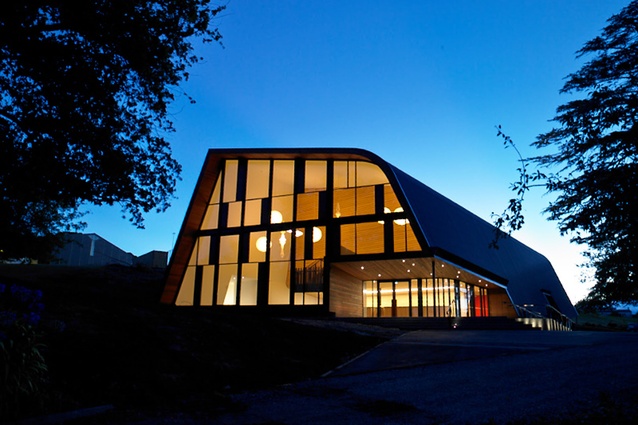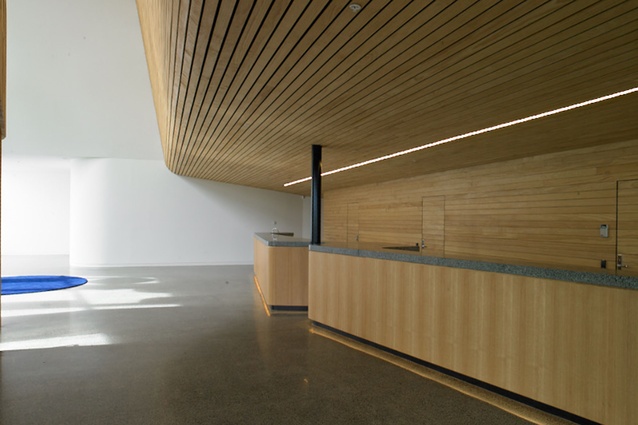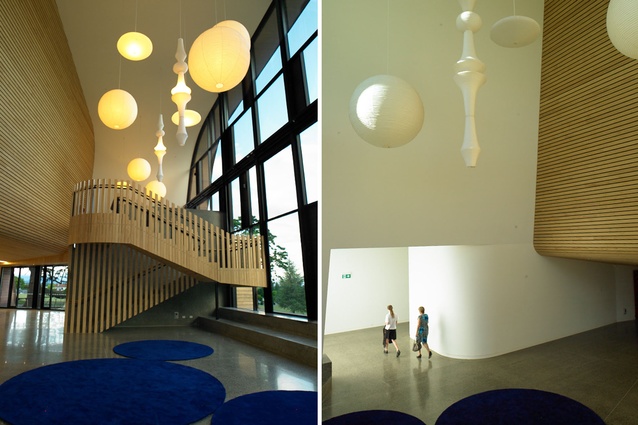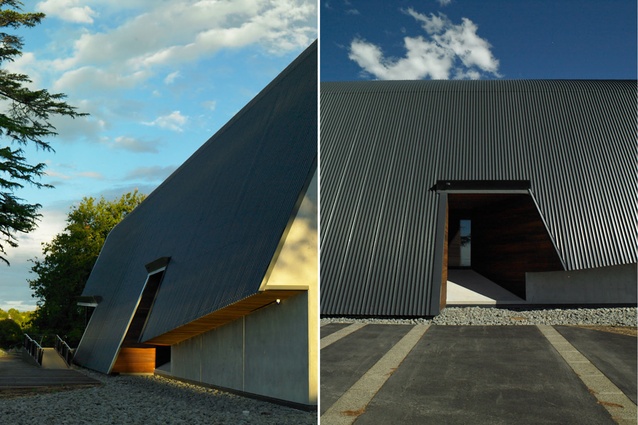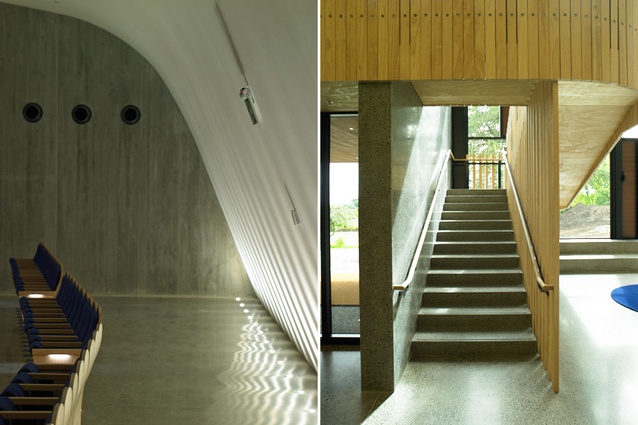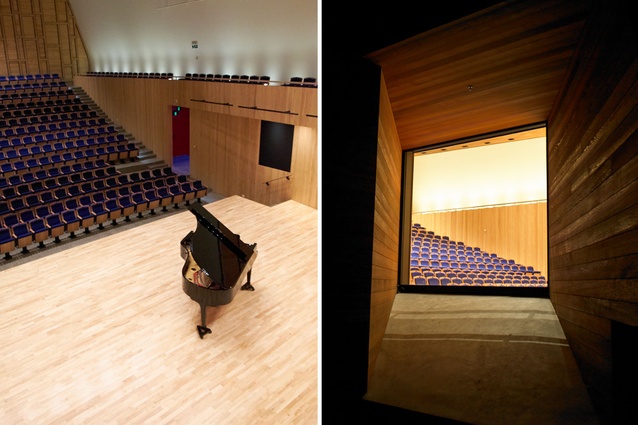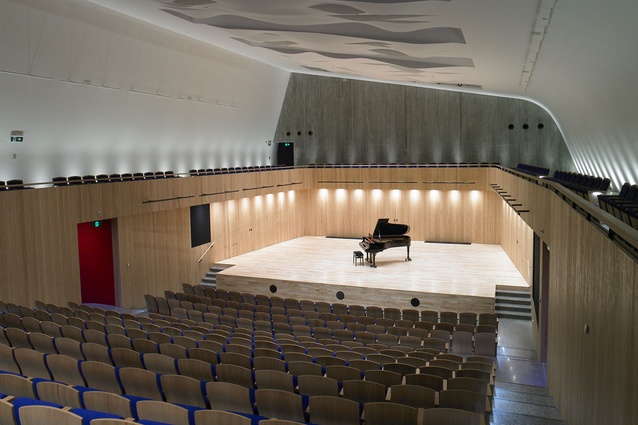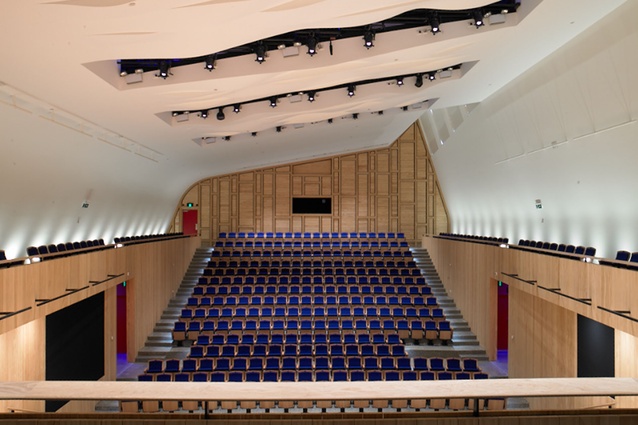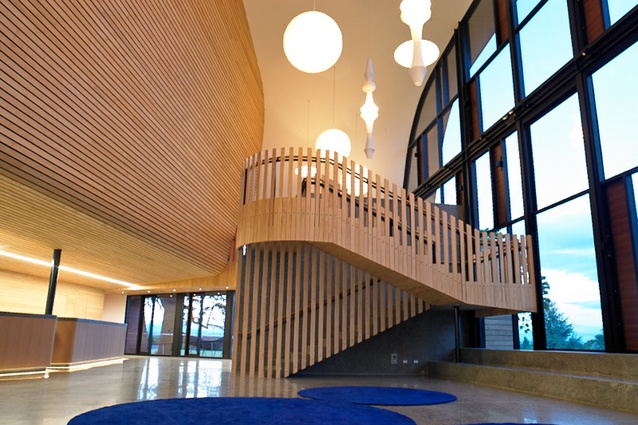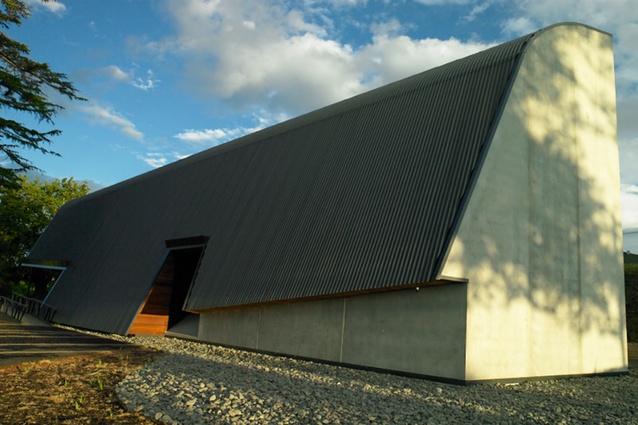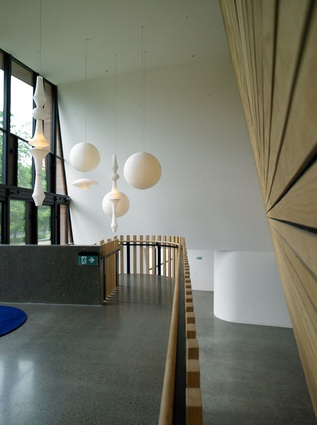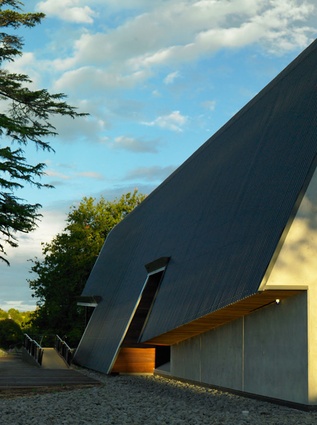Blyth Performing Arts Centre
This is the second of two buildings by Stevens Lawson Architects at this Havelock North college in Hawke’s Bay. Each is quite different, reflecting its respective purpose and location in the Iona College grounds. The Information Resource Centre and library, adjacent to the school’s oldest buildings, is a well-mannered new addition to the family in a precinct at the heart of the school and a literal home away from home for boarding school students.
That building has kept all its spatial fizz bottled up but this one, in a more expansive setting, for a more lively purpose, is more adventurous. It sits close to the school’s entrance driveway and is conceived as an interface with the public that performs a welcoming function for visitors and as a host for performances.
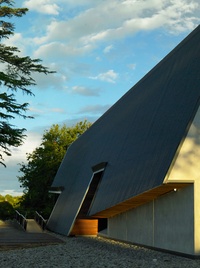
This is stage one of two and accommodates the main auditorium and lobby as well as ancillary rooms. The other stage, to be tucked mostly behind the new structure, will incorporate a dance theatre, practice spaces, classrooms and a proper green room. This is New Zealand, however, where stage two often never happens; should that be the case, this building is good enough and fit for review. It lies curled at the base of a slope adjacent to open fields and seems a restless form, its curved skin wrapping and unwrapping its volume.
The main façade, framed in timber, floats lightly above the earth and a parting in the fabric creates a porch welcoming us into a large, double-height lobby. This is an asymmetrical Aalto-esque space shaped from leaning walls rippling with slats of timber, and the organic forms and finishes give the place a liveliness and fluidity well suited to both its naturalistic park-like setting and the nature of its place as a creative site. The lobby’s vast window has a broad sill that provides casual seating and is sun-filled during the day and a luminous beacon at night when events are on. Even the hanging Noguchi lamps have an organic quality that contributes to the atmosphere.
The auditorium, seating about 300, with 100 more in the gallery, is surprising in that it maintains this asymmetry and also allows natural light into the space. The acoustic design was managed by Marshall Day and, apparently, works extremely well, the school tells me. The rear wall is a bank of timber louvres that can be adjusted to tune the space for different types of performance or event.
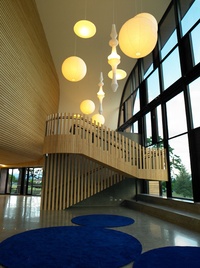
This is a multipurpose space and, although primarily a theatre, as a school facility, it needs to work by day as well as by night, for small events as well as big productions, and for speech as well as music. Even with a few students practising in there on the day I visited, the space wasn’t cold, empty and anonymous as most of the black-box theatres with which we are familiar can be. Southern daylight filters in from the top and, near the stage, a slot window allows the audience to look north out over the fields. The gallery running around the entire volume also gives it the character of an old school or public hall (in a good way).
Many of us have had enough of boxes but the issue with more characterful architectural space is that the black-box type of performing arts container is better at allowing the creation of theatrical magic as we are suspended in a netherworld shut away from the outside. But, on balance, the architectural solution we experience here is the best option for the many different school purposes and times of day in which the auditorium will be used.
The rest of the building contains back-of-house functions: cart dock, temporary green room (later to be a recording studio), changing rooms and toilets, as you would expect, strung together by a circulation route that loops down one side of the building and will, in the future, be at the centre of the complex, connecting with stage two of the development. The swirling spaces of this structure suit the nature of this building type: a complex that comes alive when events are on and it bustles with performers and audience.
The asymmetries in plan lead people in past the counter, create a large eddy-like space in the lobby for gathering and mixing, before pouring most patrons into the main theatre or lifting a few up the gentle staircase to the gallery. But the space-making also relates to the architectural preoccupations of Stevens Lawson: to create endless, boundless spaces. That was evident in the IRC although quietly constrained by the gabled form of that structure.
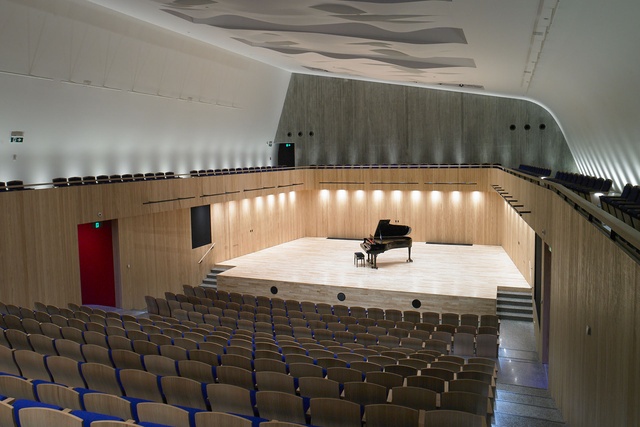
Here it is much more evident in the sculptural form of the Blyth Centre: the building being a large organism rather than a box. It is reminiscent of those more humanitarian modernists, the Scandinavians, and, hopefully, signals a new wave of architectural concerns and the recession of that tide of minimalist steel and glass aquariums that have been repressing us and our activities over the past too-many years.
Architecture New Zealand March 2015 article on the Iona Information Resource Centre (IRC) here.

